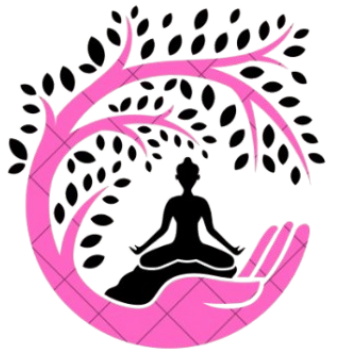The Best Chiropractic Treatments for Rotator Cuff Injuries
Rotator cuff injuries are common in both athletes and non-athletes, often leading to shoulder pain and dysfunction. Chiropractic treatments offer a non-invasive approach to managing these injuries by targeting the underlying musculoskeletal imbalances. Techniques such as spinal adjustments, soft tissue therapy, and individualized rehabilitation programs are utilized to enhance recovery. By focusing on restoring shoulder mechanics and relieving pain, chiropractic care presents a promising option for those seeking thorough shoulder health solutions. Curious about the specifics?
Understanding Rotator Cuff Injuries
Rotator cuff injuries are a prevalent cause of shoulder pain and dysfunction, often resulting from repetitive overhead activities or acute trauma. These injuries commonly occur in individuals engaging in activities such as swimming, tennis, or occupations requiring frequent lifting. Trauma, such as falls, can also precipitate tears or inflammation of the rotator cuff tendons. The pathophysiology involves degeneration, microtears, and inflammation of the tendons, leading to pain and restricted range of motion.
Recovery timelines vary, contingent upon the severity of the injury and the intervention strategy. Minor injuries may resolve within a few weeks with conservative management, whereas more severe cases involving tendon tears may require surgical intervention, extending recovery to several months. Evidence-based physical therapy protocols are critical in restoring function and preventing recurrence.
The Role of Chiropractic Care in Shoulder Health
Chiropractic care offers a complementary approach to managing shoulder health, particularly for patients experiencing rotator cuff injuries. Through precise spinal adjustments and targeted soft tissue therapies, chiropractors aim to enhance shoulder stability and support injury prevention. Evidence suggests that chiropractic interventions can reduce inflammation and improve range of motion, thereby facilitating functional recovery. Emphasis is placed on correcting postural imbalances, which play a critical role in maintaining shoulder integrity and minimizing recurrent injuries. By focusing on the musculoskeletal alignment, chiropractic care can alleviate stress on the rotator cuff muscles, promoting ideal healing conditions. Additionally, tailored exercise programs may be prescribed to strengthen surrounding musculature, further contributing to joint stabilization and reducing the risk of future shoulder injuries.
Initial Assessment and Diagnosis
The initial assessment and diagnosis of rotator cuff injuries in a chiropractic setting involve a thorough approach, beginning with a detailed patient history evaluation to identify potential contributing factors and symptom patterns. Physical examination techniques, including range of motion assessments and specific orthopedic tests, are employed to evaluate shoulder function and detect any musculoskeletal abnormalities. Diagnostic imaging tools, such as ultrasound or MRI, may be utilized to confirm the diagnosis and assess the extent of the injury, ensuring an evidence-based approach to patient care.
Patient History Evaluation
When initially evaluating a patient with a suspected rotator cuff injury, a thorough examination of their medical history is imperative. This extensive review forms the cornerstone of an accurate diagnosis and effective treatment plan. Clinicians should meticulously document the patient’s history, focusing on the injury timeline and any previous shoulder issues. Gathering details about the onset, duration, and progression of symptoms is essential to understanding the injury’s context. Patients should be queried about any precipitating events, such as trauma or repetitive overhead activities, as these can elucidate potential injury mechanisms. Additionally, understanding pre-existing conditions and past interventions aids in constructing a complete clinical picture. Collectively, these details guide the clinician in formulating a differential diagnosis and tailoring patient-centered care.
Physical Examination Techniques
With a thorough medical history in place, attention shifts to the physical examination, a pivotal component in diagnosing rotator cuff injuries. This examination focuses on evaluating muscle strength and joint mobility, which are critical for identifying the extent and specific nature of the injury. Clinicians employ various techniques, such as resisted shoulder abduction and external rotation tests, to assess muscle strength. These tests help determine the involvement of the supraspinatus and infraspinatus muscles. Joint mobility is evaluated through passive and active range of motion exercises, examining limitations or pain during movement. The Neer and Hawkins-Kennedy impingement tests further aid in identifying subacromial impingement. Extensive assessment guarantees accurate diagnosis, forming the basis for effective, individualized chiropractic treatment plans.
Diagnostic Imaging Tools
In the initial evaluation and diagnosis of rotator cuff injuries, diagnostic imaging tools play an essential role in supplementing physical examination findings. MRI findings provide extensive insights into soft tissue structures, revealing the extent of tendon tears, muscle atrophy, and other pathological changes. This non-invasive modality offers high-resolution images, vital for formulating an effective treatment plan. Conversely, ultrasound evaluation serves as a dynamic, real-time imaging technique, advantageous for visualizing tendon movement and examining inflammation or fluid accumulation. It is particularly beneficial for patients who may not tolerate MRI procedures. Together, these imaging modalities enhance diagnostic accuracy and inform patient-centered management strategies, ensuring ideal outcomes. Accurate interpretation of these tools is critical for tailoring chiropractic interventions to the specific needs of each patient.
Spinal Adjustments and Their Impact on Shoulder Function
Spinal adjustments, targeting the alignment of vertebrae, are posited to optimize neural pathways, thereby potentially enhancing shoulder function in patients with rotator cuff injuries. Research indicates that precise chiropractic manipulations may improve nerve communication between the spinal column and shoulder girdle, facilitating more effective muscle function and range of motion. Patient outcomes often reflect reduced pain and increased mobility following these evidence-based interventions, underscoring the importance of spinal health in the management of shoulder injuries.
Aligning Spinal Vertebrae
Chiropractic care often involves spinal adjustments, which may play a significant role in improving shoulder function in patients with rotator cuff injuries. Proper spinal alignment guarantees ideal biomechanics, potentially alleviating stress on the shoulder girdle. Vertebral adjustments, conducted by skilled practitioners, aim to correct misalignments that might impede rehabilitation efforts. Studies indicate that restoring spinal alignment correlates with improved range of motion and pain reduction in shoulder injuries. These adjustments are designed to promote symmetry and balance in the musculoskeletal system, thereby enhancing functional outcomes. By addressing the spine’s alignment, chiropractic care may offer a complementary approach to traditional therapies. Ultimately, this may facilitate a more thorough recovery for patients suffering from rotator cuff injuries.
Enhancing Nerve Communication
Restoring spinal alignment not only optimizes biomechanics but also plays a significant role in enhancing nerve communication, which can greatly impact shoulder function in patients with rotator cuff injuries. By realigning the spine, chiropractors facilitate unobstructed nerve pathways, vital for transmitting motor and sensory signals between the central nervous system and the shoulder complex. This optimization of neural communication techniques can lead to improved muscular coordination and proprioception, essential for shoulder rehabilitation. Evidence suggests that spinal adjustments may decrease inflammation and enhance circulation, further promoting recovery. Additionally, precise chiropractic interventions can alleviate compression on nerve roots, potentially reducing pain and improving functional outcomes. Patient-focused care highlights the importance of individualized treatment plans for maximizing shoulder function and enhancing overall quality of life.
Soft Tissue Therapy Techniques
Soft tissue therapy techniques play a pivotal role in managing rotator cuff injuries by addressing muscle imbalances and promoting healing. These therapeutic interventions focus on alleviating pain and improving range of motion through precise manipulation of soft tissues. Trigger point therapy is a critical component, targeting hyperirritable spots within the muscle fibers that contribute to pain and dysfunction. By applying sustained pressure, trigger point therapy helps release muscle tension and reduce referred pain patterns. Complementary to this, myofascial release involves gentle, sustained pressure on the fascial tissues, enhancing flexibility and circulation. These evidence-based techniques aim to restore peak function and support the natural recovery process. Patients benefit from decreased discomfort and enhanced mobility, fostering a more effective rehabilitation journey.
Importance of Corrective Exercises and Rehabilitation
Following the application of soft tissue therapy techniques, corrective exercises and rehabilitation greatly contribute to the thorough management of rotator cuff injuries. These strategies emphasize strengthening and flexibility, addressing muscle imbalances that contribute to shoulder dysfunction. Corrective techniques involve targeted exercises designed to enhance rotator cuff stability and scapular mechanics. Evidence supports the integration of personalized rehabilitation programs, which systematically restore range of motion and improve functional outcomes. Patient adherence to these programs is critical, as consistent engagement fosters neuromuscular control and reduces recurrence risk. By incorporating progressive resistance exercises and proprioceptive training, therapeutic regimens facilitate ideal healing. Consequently, a holistic approach combining chiropractic care and structured rehabilitation is essential for achieving long-term recovery and functional restoration in individuals with rotator cuff injuries.
Benefits of Chiropractic Modalities for Pain Relief
How do chiropractic modalities effectively alleviate pain associated with rotator cuff injuries? These interventions focus on realigning musculoskeletal structures to reduce inflammation and promote healing. Chiropractic benefits are evident in pain management through techniques such as spinal adjustments, soft tissue mobilization, and myofascial release. By improving joint function and enhancing circulation, these modalities reduce nociceptive input to the central nervous system, thereby diminishing pain perception. Studies indicate that chiropractic treatments can decrease reliance on pharmacological interventions, offering a safer alternative with minimal side effects. Patient-focused care emphasizes individualized treatment plans, targeting specific dysfunctions within the shoulder girdle. Additionally, regular chiropractic care may accelerate recovery times, allowing patients to regain functional mobility and return to daily activities more efficiently.
Preventive Strategies for Long-Term Shoulder Health
Given the importance of maintaining shoulder health, implementing preventive strategies is essential for minimizing the risk of rotator cuff injuries. Research indicates that enhancing shoulder mobility and strength through targeted exercises can greatly contribute to injury prevention. Regular stretching and strengthening routines, focusing on the rotator cuff and surrounding musculature, are vital. Evidence-based techniques such as proprioceptive training help improve joint stability, reducing the likelihood of overuse injuries. Additionally, ergonomic adjustments in daily activities and work environments can alleviate undue stress on the shoulder complex. Patient education on maintaining proper posture and body mechanics is fundamental in promoting long-term shoulder health. Incorporating these preventive measures into a routine can effectively decrease the incidence of rotator cuff pathology, fostering overall musculoskeletal wellness.
Choosing the Right Chiropractor for Your Needs
When selecting a chiropractor to address rotator cuff injuries, it is essential to evaluate their qualifications, experience, and approach to care. Chiropractor qualifications should include a Doctor of Chiropractic (D.C.) degree from an accredited institution, alongside state licensure. Experience in treating musculoskeletal disorders, specifically rotator cuff injuries, is important for effective management. The chiropractor’s treatment approaches should be evidence-based, integrating techniques such as spinal adjustments, soft tissue therapy, and rehabilitative exercises. Patient-focused care is critical, ensuring individualized treatment plans that consider the patient’s specific diagnosis and recovery goals. Additionally, open communication and regular progress assessments are key components to successful outcomes. Thorough care should include collaboration with other healthcare professionals to optimize shoulder function and expedite recovery.
Frequently Asked Questions
How Long Does a Typical Chiropractic Session for a Rotator Cuff Injury Last?
Session duration for chiropractic care targeting rotator cuff injuries typically ranges from 15 to 30 minutes. Treatment frequency depends on injury severity, often involving multiple weekly visits initially, shifting to periodic maintenance as healing progresses, based on patient response.
Are There Any Side Effects From Chiropractic Treatments for Shoulder Injuries?
Chiropractic care for shoulder injuries may cause mild side effects such as soreness or temporary discomfort. However, treatment effectiveness varies, with most patients experiencing relief and improved function, enhancing overall recovery when used as part of a thorough care plan.
Can Chiropractic Care Help Prevent Future Shoulder Injuries?
Chiropractic care can enhance shoulder stability, contributing to injury prevention. By improving joint alignment and muscular function, it may reduce the risk of future shoulder injuries. Evidence suggests patient-focused interventions promote long-term musculoskeletal health benefits.
Is It Safe to Receive Chiropractic Treatment After Shoulder Surgery?
Post-surgery recovery for shoulder procedures requires careful adherence to rehabilitation protocols. Chiropractic treatment can be safe if aligned with these protocols, focusing on gentle techniques. Consultation with healthcare providers confirms the treatment supports healing and avoids complications.
What Should I Wear to a Chiropractic Session for a Rotator Cuff Injury?
For ideal outcomes during chiropractic sessions, patients should wear appropriate attire such as comfortable clothing that allows unrestricted shoulder movement. Evidence suggests loose-fitting garments can enhance treatment efficacy and accommodate adjustments without impeding range of motion.

